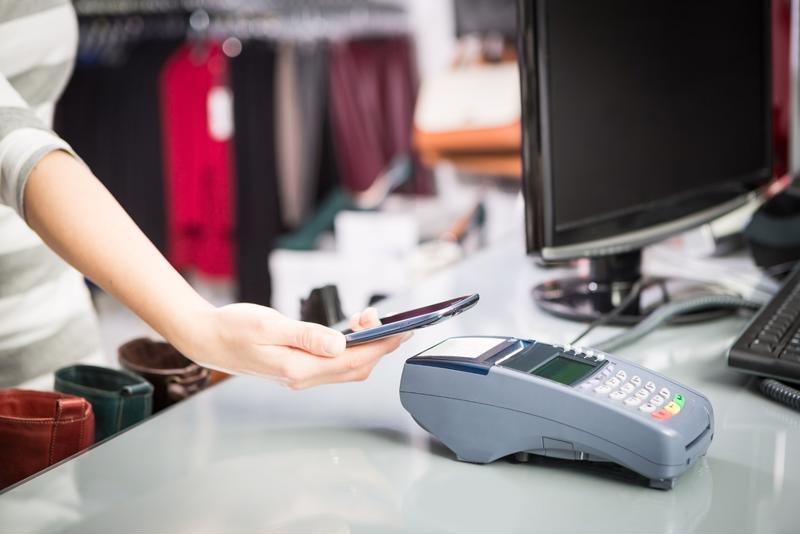The weeks leading up to the Apple Pay unveiling were filled with excitement, skepticism and even confusion. Industry experts were uncertain how mobile payments could shake up the payment processing sector. In many ways, the introduction of Apple Pay was good news that retail transactions were experiencing a reawakening.
After all, the acceptance of mobile payments as a nationwide transactional method would signal a shift away from credit and debit cards and more towards alternative payment methods such as Bluetooth, near-field communication and, perhaps most importantly recently, EMV. If mobile transactions become the norm, the road for all of those contactless transaction techniques could be paved with its successes and failures. So, herein lies the question: Do mobile payments have what it takes? Here are four barriers to entry:
1. Industry support
The best way to identify if mobile payment methods are catching on is to see if consumers are using their smartphones to pay for products and services on a regular basis. Well, Samsung seems to think that mobile payments are popular. Forbes reported that Samsung plans to introduce a mobile wallet service that will "compete with Apple Pay." The smartphone and tablet manufacturer recently acquired LoopPay, a U.S. mobile payments services provider, according to the source.
This move by Samsung seems to be a business tactic rather than a stance behind a payment method. Too many corporations are working to implement these mobile wallet-esque mobile applications, which is causing problems for both retailer that need to purchase new payment processing systems and consumers who are confused by a market flooded with options.
"Consumer trust is still a huge obstacle for mobile payments."
2. Need for trust
Even if many organizations adopt mobile payment systems, consumers still need to be won over. Without support from users, these technologies don't have a chance. This might be difficult after witnessing 2014, a year that IT experts referred to as a "year of mega breaches."
According to Mobile Payments Today, trust is still a huge obstacle for mobile payments. The source indicated that financial security and support in the event of an issue are two concerns holding back consumers from using their smartphones for transactions.
In regard to cybersecurity, retailers will need to implement cutting-edge solutions that not only meet industry standards and regulations, but these tools also need to support seamlessly integration with existing systems. If payment processing platforms cannot properly work with merchant's IT hardware, it is unlikely that purchasing demands can be met. Consumers will also want to know that their retailers are protecting their personal and financial information. In this way, payment processing security solutions could build trust, but will it it enough?
On top of security, customers will demand a pleasant experience when checking out. Mobile Payments Today suggested trying to prevent hiccups in the mobile transaction process. According to the source, one in four shoppers will abandon their purchase and not shop at a brand again if they must stop what they are doing during a mobile checkout. This means using the best possible systems for security and payment processing in order to mitigate any IT performance issues.
3. Budgeting woes
Similar to other contactless payment methods, mobile transactions will require retailers to install new hardware and IT environments. While this provides merchants with a great opportunity to upgrade their whole payment systems, many businesses fear that mobile payments will end up costing them more than these technologies will earn them. This will turn many small companies away from the systems, perhaps preventing the transactional trend to catch on.
Kaz Nejatian, co-founder and CEO of mobile payment system Kash, explained to Business News Daily that the equipment procurement process and fees associated with new hardware are major pain points.
 Contactless payment systems are already the norm in some retailer locations.
Contactless payment systems are already the norm in some retailer locations."Every mobile payment app increases retail costs and reduces [the retailer's] margin," Nejatian said, the source reported. "If you accept [a system like] Apple Pay, you have to invest in POS [point-of-sale] systems and contracts, and your fees go up."
Additionally, if retailers implement completely new systems, what happens in October 2015 when EMV starts to catch on? One investment will prove worthless, while the other valuable, but taking that risk as a merchant is too dangerous. EMV is different because it's clear that technology will become an industry standard. Until a single mobile payment method stands out as a leader, no retailer will take a chance.
4. Educate the market
The final flaw of mobile payments come back to the consumer. The average customer just doesn't know enough about mobile transactions yet. Payment Week cited a survey by Wakefield Research that found approximately half of the respondents were "unsure" about how the technology works, while that same amount of people indicated that they are uneasy with sacrificing privacy if they used mobile payment methods, supporting the fact that the consumer isn't educated about how these systems function.
The future looks challenging for mobile payments. While it might be difficult to say for certain, the number of barriers preventing this trend from hitting the mainstream seem to point to a shaky adoption period for the technologies.
[horizontal_line]
Is Your Business Ready For Mobile Payments?
[spacer_div_10]
[button_link]We Can Help[/button_link]


